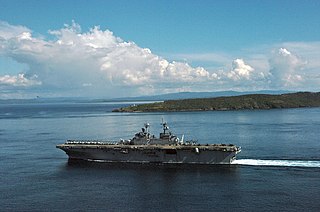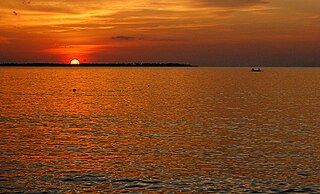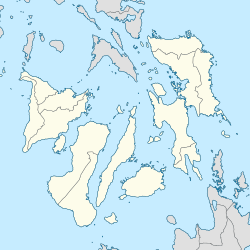
Northern Samar, officially the Province of Northern Samar, is a province in the Philippines located in the Eastern Visayas region. Its capital is Catarman, the most populous town in the province and is located at the northern portion of the island of Samar. Bordering the province to the south are the provinces of Samar and Eastern Samar. To the northwest, across the San Bernardino Strait is Sorsogon; to the east is the Philippine Sea of the Pacific Ocean and to the west is Samar Sea.

Loboc, officially the Municipality of Loboc, is a 4th class municipality in the province of Bohol, Philippines. According to the 2020 census, it has a population of 17,418 people.

Tarangnan, officially the Municipality of Tarangnan, is a 4th class municipality in the province of Samar, Philippines. According to the 2020 census, it has a population of 25,713 people.

Capul, officially the Municipality of Capul, is a 5th class island municipality in the province of Northern Samar, Philippines. According to the 2020 census, it has a population of 12,323 people.

Laoang, officially the Municipality of Laoang, is a 2nd class municipality in the province of Northern Samar, Philippines. According to the 2020 census, it has a population of 61,607 people.

The Roman Catholic Diocese of Calbayog is an ecclesiastical territory of the Catholic Church named after its episcopal see, Calbayog, a city on the western side of the province of Samar in the Philippines.

The Spanish fortifications of the Philippines, or fuerzas, are strongholds constructed by Filipinos and Spaniards primarily for protection against local and foreign aggressors during the Spanish colonial period, and during the subsequent American and Japanese occupations. Structures built included fortresses, watchtowers, and bastions. Many are badly damaged, either due to old age or past conflicts. Currently, there are initiatives for restorations of all forts, beginning when the Baluarte Luna of La Union and the Intramuros of Manila were restored in the 2010s. In 2013, a typhoon and earthquake hit Central Visayas and damaged numerous Spanish fortifications, leading to the largest restoration activity for fortifications in Philippine history.

Capul Island Lighthouse is a historic lighthouse on Titoog Point in San Luis on the northern tip of Capul Island, Northern Samar in the Philippines. It marks the western entrance to the San Bernardino Strait coming in from Ticao Pass.

Santo Tomás de Villanueva Parish Church, commonly known as Miagao Church, is a Roman Catholic church located in Miagao, Iloilo, Philippines. It is under the jurisdiction of the Archdiocese of Jaro. The church was declared as a UNESCO World Heritage Site on December 11, 1993, together with San Agustin Church in Manila; Nuestra Señora de la Asuncion Church in Santa Maria, Ilocos Sur; and San Agustin Church in Paoay, Ilocos Norte under the collective title Baroque Churches of the Philippines, a collection of four Baroque Spanish-era churches.

Santa Cruz Parish Church, also known as Holy Cross Parish Church and Maribojoc Church, is a Roman Catholic parish church in the municipality of Maribojoc, Bohol, Philippines, under the Diocese of Tagbilaran. The parish was first established by the Jesuits in 1767 or 1768 with Father Juan Soriano, SJ as its first parish priest. The Augustinian Recollects later administered the community until 1898.

The Fort of Saint Vincent Ferrer or commonly known as Punta Cruz Watchtower (Tagalog: Bantayan ng Punta Cruz) is a Spanish colonial era watchtower located at the western tip of the municipality of Maribojoc, Bohol, Philippines. Also known as Maribojoc Watchtower because of its geographical location, it is located three kilometers (1.9 mi) away from Maribojoc Church. It is known for being the "only perfect isosceles triangle" tower-fort structure in the Philippines.

Immaculate Conception Parish Church, also known as La Purisima Concepcion de la Virgen Maria Parish Church and Baclayon Church, is a Roman Catholic church in the municipality of Baclayon, Bohol, Philippines within the jurisdiction of the Diocese of Tagbilaran. Baclayon was founded by the Jesuit priest Juan de Torres and Gabriel Sánchez in 1596, and became the oldest Christian settlement in Bohol. It was elevated as a parish in 1717 and the present coral stone church was completed in 1727. The Augustinian Recollects succeeded the Jesuits in 1768 and heavily renovated the church since then.

San Pedro Apostol Parish Church, commonly known as Loboc Church and alternatively as the Diocesan Shrine of Our Lady of Guadalupe in Extremadura, is a Roman Catholic church in the municipality of Loboc, Bohol, Philippines, within the jurisdiction of the Diocese of Tagbilaran.

San Ignacio Church in Intramuros, Manila, Philippines, was designed for the Jesuits by architect Félix Roxas Sr., and completed in 1899. It was known as their "Golden Dream" but was destroyed during World War II. Its interiors, embellished with carvings, had been designed by Isabelo Tampinco.

The Archdiocesan Shrine of Patrocinio de Maria Santisima, commonly known as Boljoon Church, is a Roman Catholic church dedicated to Our Lady of the Patronage in the municipality of Boljoon, Cebu, Philippines, under the Archdiocese of Cebu.

Immaculate Conception Parish Church, commonly known as Guiuan Church, is a Roman Catholic church in the municipality of Guiuan, Eastern Samar, Philippines, within the jurisdiction of the Diocese of Borongan.

Saints Peter and Paul Cathedral, also known as the Parish of Our Lady's Nativity and commonly known as Calbayog Cathedral, is a Roman Catholic cathedral located in the city of Calbayog, Samar province, Philippines. It is the seat of the Diocese of Calbayog, a suffragan of the Palo Archdiocese. Being the first cathedral designated in Eastern Visayas in 1913, it is considered as the mother church of the region.

Saint Catherine of Alexandria Cathedral Parish, commonly known as Dumaguete Cathedral, is a Roman Catholic cathedral in Dumaguete, Negros Oriental, Philippines. The cathedral is the seat of the Diocese of Dumaguete and is considered as the island's oldest stone church, having been completed in 1776.

Our Lady of the Annunciation Cathedral Parish, commonly known as Catarman Cathedral, is a Roman Catholic cathedral in the municipality of Catarman, Northern Samar, in the Philippines. It is dedicated to the Virgin Mary under the title Our Lady of the Annunciation, and has been the cathedral of the Diocese of Catarman since the diocese's establishment in 1974.
























